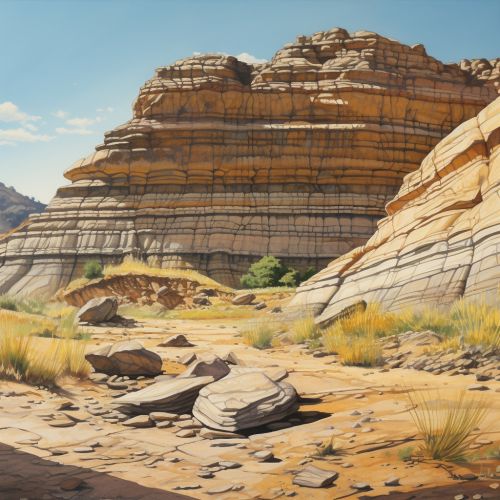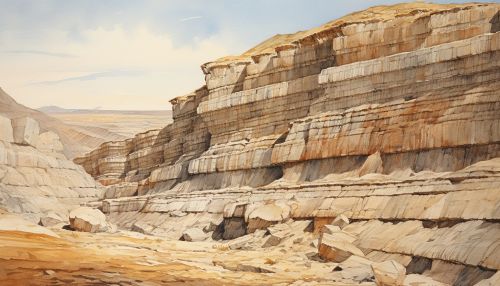Biostratigraphy
Introduction
Biostratigraphy is a sub-discipline of sedimentology that uses the distribution of fossils within sedimentary strata to establish relative ages. This method of dating is based on the law of superposition, which states that in an undisturbed sequence of rock layers, the oldest layer will be at the bottom and the youngest at the top. Biostratigraphy is an important tool in the field of paleontology and is used extensively in the exploration of fossil fuels.


Principles of Biostratigraphy
The principles of biostratigraphy are based on the concept of faunal succession, which states that different fossil species always appear and disappear in the same order, and that once a fossil species goes extinct, it disappears from the fossil record and does not reappear. This allows for the identification of 'index fossils', specific species that are used to define and identify geologic periods.
Law of Superposition
The law of superposition is a key principle in biostratigraphy. It states that in an undisturbed sequence of sedimentary rocks, each layer is younger than the one beneath it and older than the one above it. This principle allows biostratigraphers to establish a relative age for the rocks and the fossils contained within them.
Principle of Faunal Succession
The principle of faunal succession is another key principle in biostratigraphy. It states that fossil organisms succeed one another in a definite and determinable order, and any time period can be recognized by its fossil content. This principle allows biostratigraphers to correlate rock layers across large distances and to establish a relative geologic time scale.
Principle of Lateral Continuity
The principle of lateral continuity states that layers of sediment initially extend laterally in all directions and thus, rocks that are otherwise similar, but are now separated by a valley or other erosional feature, can be assumed to be originally continuous. This principle is crucial in correlating the ages of rocks in different locations.
Biozones
A biozone is a body of rock defined or characterized by its fossil content. The concept of biozones is fundamental to the practice of biostratigraphy. There are several types of biozones, including taxon range biozones, concurrent range biozones, interval biozones, and lineage biozones.
Taxon Range Biozones
A taxon range biozone is defined by the total stratigraphic range of a particular taxon, from its first appearance to its last appearance in the geologic record. This type of biozone is particularly useful in the identification of index fossils.
Concurrent Range Biozones
A concurrent range biozone is defined by the overlapping ranges of two different taxa. This type of biozone is useful in correlating rock layers across different geographic areas.
Interval Biozones
An interval biozone is defined by the stratigraphic interval between the first or last appearances of two different taxa. This type of biozone is useful in defining specific intervals of geologic time.
Lineage Biozones
A lineage biozone is defined by a sequence of taxa that represents a specific evolutionary lineage. This type of biozone is useful in studying the evolutionary history of a particular group of organisms.
Applications of Biostratigraphy
Biostratigraphy has a wide range of applications in both academic and industrial contexts. These include the correlation of rock layers across large distances, the dating of rock strata, the study of evolutionary patterns and processes, and the exploration for and exploitation of fossil fuels.
Correlation of Rock Layers
One of the primary applications of biostratigraphy is the correlation of rock layers across large distances. By comparing the fossil content of different rock layers, biostratigraphers can establish a relative geologic time scale and correlate rock layers across different geographic areas.
Dating of Rock Strata
Biostratigraphy is also used to date rock strata. By studying the fossil content of a rock layer, biostratigraphers can determine the relative age of the rock and place it within the geologic time scale.
Study of Evolutionary Patterns and Processes
Biostratigraphy is an important tool in the study of evolutionary patterns and processes. By studying the fossil record, biostratigraphers can trace the evolutionary history of a particular group of organisms and study patterns of speciation and extinction.
Exploration for and Exploitation of Fossil Fuels
Biostratigraphy is also used in the exploration for and exploitation of fossil fuels. By studying the fossil content of rock layers, biostratigraphers can identify potential reservoirs of oil and gas and can help to determine the best locations for drilling.
